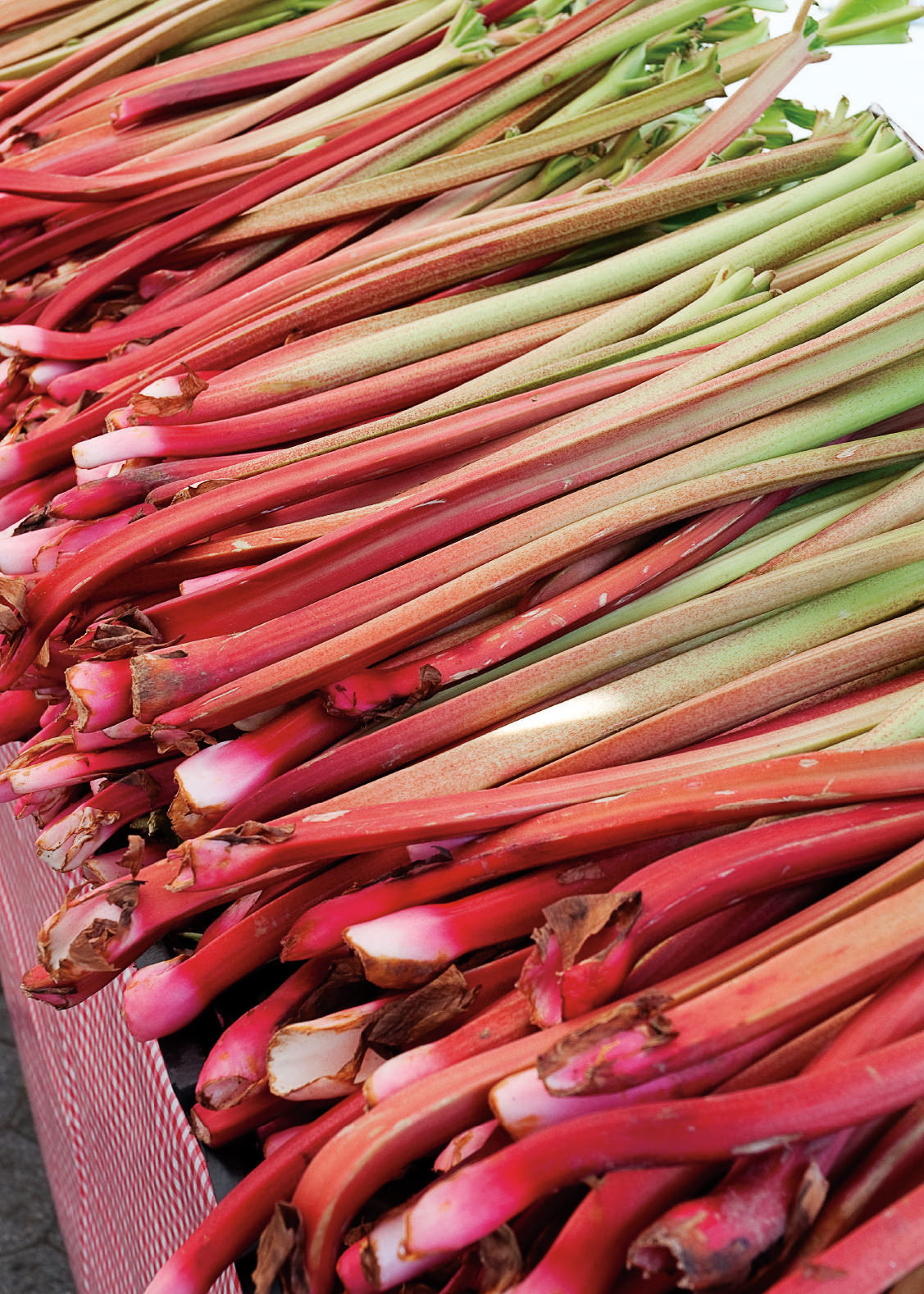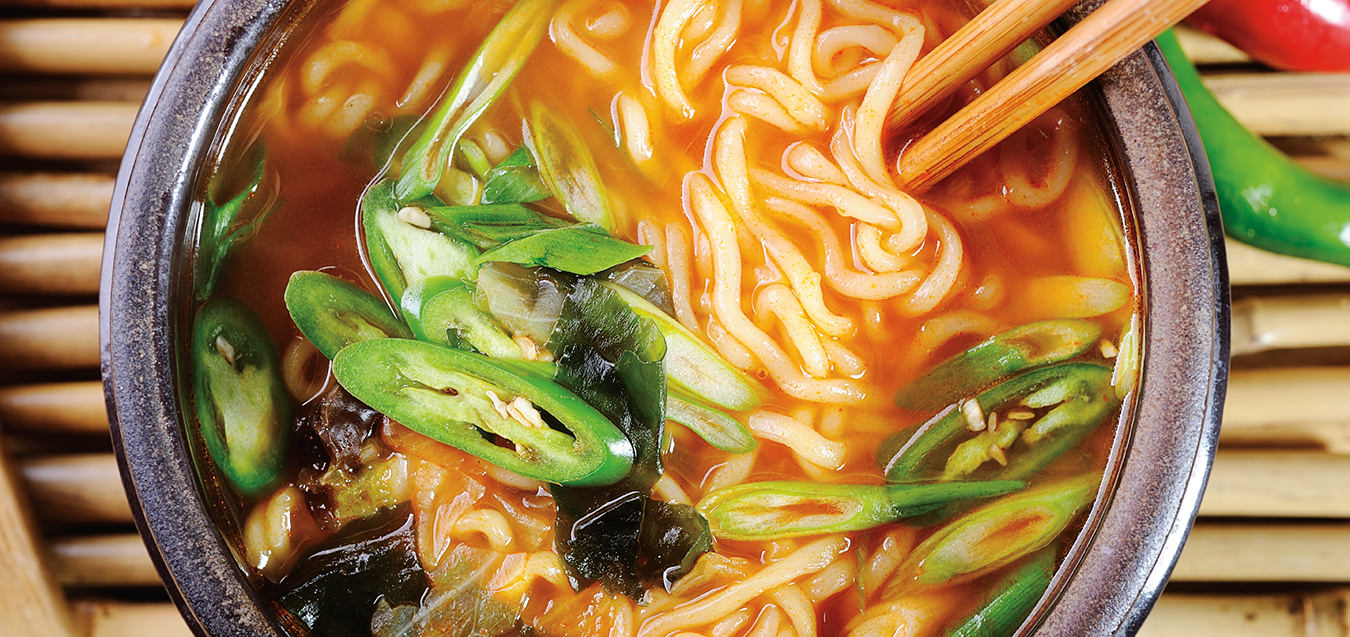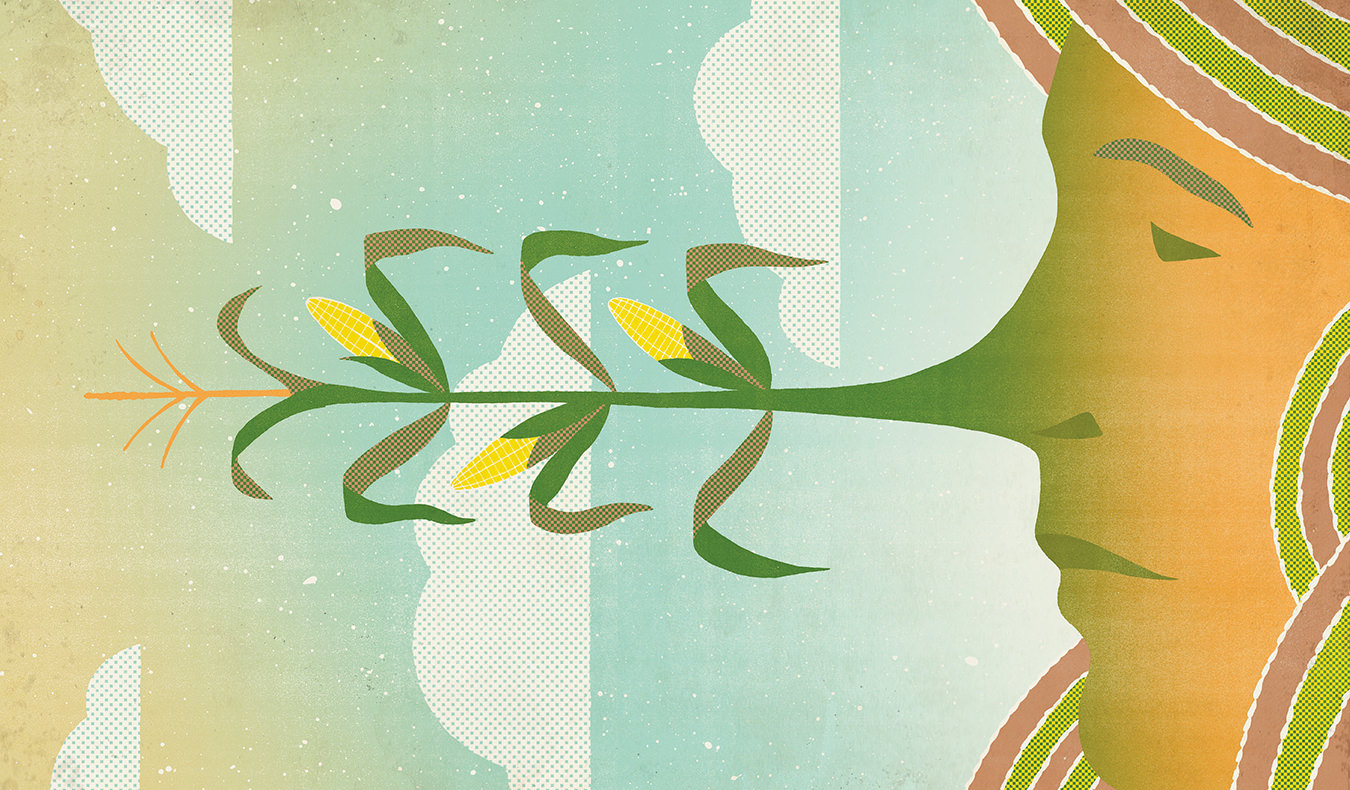The Future of 3-D Printed Food
Atoma and the science of flavour.
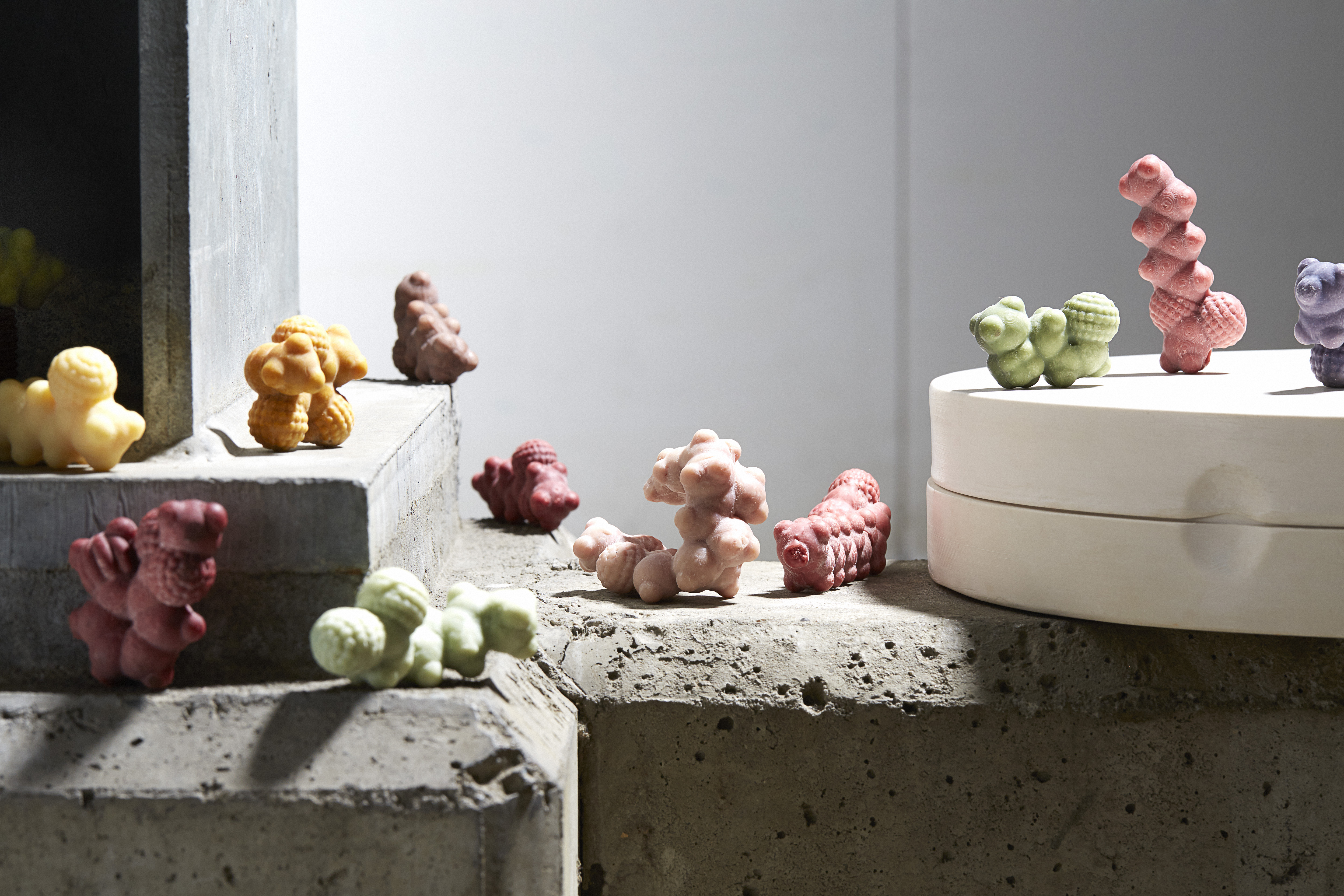
“My fridge used to contain more weird chemicals than food, which was funny when friends came over for dinner,” says critical food designer Alexandra Genis. While she was studying in the Netherlands at Design Academy Eindhoven, groceries shared shelf space with concrete or plaster powder, wax, and modelling clay.
Genis’ Atoma collection of “spices”, each consisting of a single flavour molecule, was the Saint Petersburg–born designer’s 2018 graduation project. It began when she was eating strawberry yogurt and read its packaging, which said it “contains no artificial flavouring.” This made Genis wonder if there are enough strawberries in the world to flavour all our yogurt naturally, and enough energy and resources to ship the yogurt around the globe.
Atoma takes advantage of the fact that a strawberry contains more than 200 flavour molecules, but 24 are enough to convey its taste. Genis plucks individual flavour molecules out of the 11,000 that exist and 3-D prints a mould in the shape of that molecule’s chemical compound. She then casts cocoa butter infused with one molecule to make a bouillon, or single-flavour “spice” (coloured according to its flavour family: fruity, green, floral, ethereal, etc.), that can be rasped over food alone or in combination with other “spices” to create complex flavours. By manifesting each molecule as a tactile object, Genis tailors it to domestic cooking, freeing it from the industrial food arena.
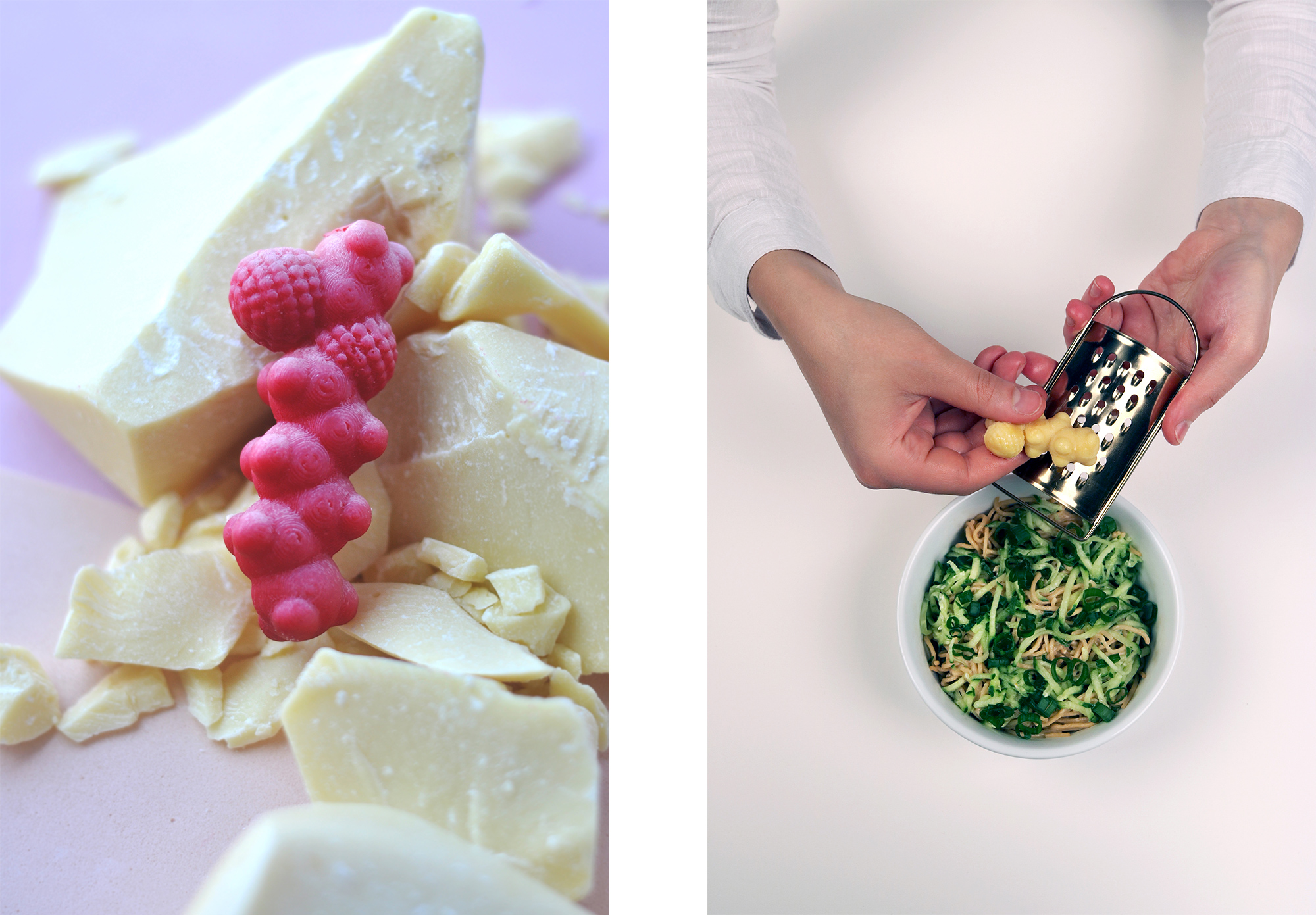
Atoma’s flavour molecules can be grated over food and are coloured according to their flavour variety.
During an internship at the Edinburgh Food Studio in Scotland, Genis—the daughter of two chemists—realized that working in the restaurant industry wouldn’t satisfy her drive to explore. “It wasn’t pushing me to ask uncomfortable questions,” she recalls.
Atoma is the calling card of her design studio, called TAS2R after the bitter taste receptors on the human tongue, which she launched in Berlin in early 2019, another cross between chemistry lab and kitchen. “My interest is to find out what food is exactly, and how humans interact with it. Why are some things edible and others aren’t? What is ‘natural’? Can we use food to become better humans?” She designs speculative food products as a means of framing problems—obesity, biodiversity, climate change—in radically new ways. One project explores edible bioplastics, while another resulted in a bird food that allows humans to distribute seeds along flight routes.
Atoma suggests that if flavouring were used widely, we could make salads that would satisfy us the way a burger does, which “sounds scary and fascinating at the same time,” Genis says. “But shouldn’t we embrace the possibilities we’ve discovered through science, instead of romantically looking backwards to ‘nature’, whatever this term might mean?”
_________
Never miss a story. Sign up for NUVO’s weekly newsletter here.

